Feb. 1, 2021
For many years, the Forum marked Black History Month by scheduling speakers and panelists who could offer a perspective on the history of Charlotte-Mecklenburg’s African-American community. In the name of upholding that tradition in these pandemic times:
The following graphics were featured on the Forum website front during Black History Month. Some highlight presentations made over the years during February at the Forum, as archived on this website. Others focus on persons and events key to Black history in America and elsewhere. Comments, and suggestions for further reading, are welcome via e-mail.
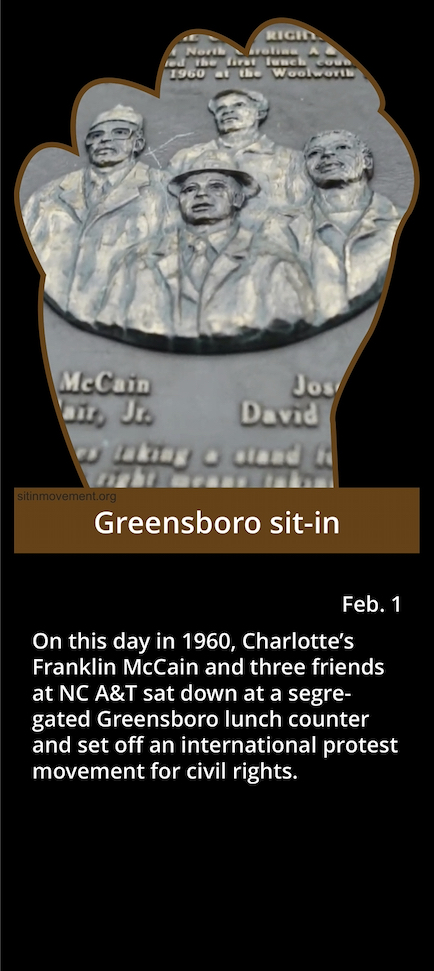
For further reading:
The International Civil Rights Center and Museum was built at the Greensboro protest site, a F.W. Woolworth store. The nonprofit Center runs tours of its displays and the lunch counter where the 1960 sit-ins occurred. It also stages educational and fund-raising events in the building. The website contains a few videos and some additional information on the era.

For further reading:
Miller appeared on a Forum panel discussion. A report on that presentation is here. Miller was profiled in the Charlotte Observer in 2015 as a community hero.
![]()

For further reading:
Discussions of the amendment’s passage are here and here. Online references to 1869 congressional debates available at the Library of Congress are here.
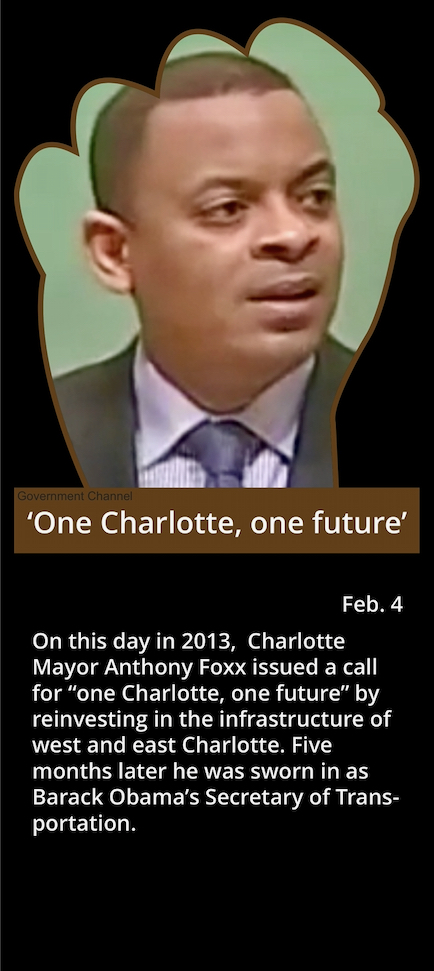
For further reading:
Foxx’s state of the city address is online here. A mothballed version of the Foxx’s biography on the Obama White House website is here.
![]()

For further reading:
Three videos from Greene’s 2013 appearance at the Forum are here. An index to the many references to Greene on this website is here. His 2016 obituaries are at QCityMetro, the Charlotte Post, and WSOC-TV’s Jim Bradley captured a number of comments from friends about Greene here.
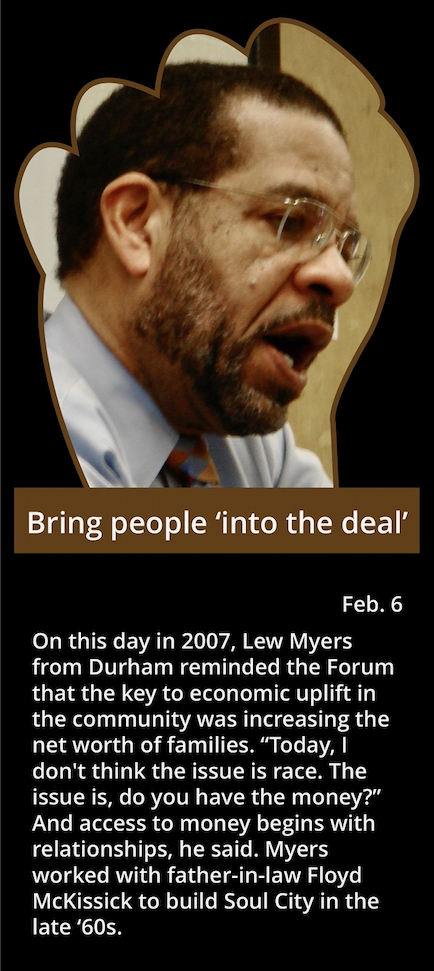
For further reading:
Materials from Myers’ Forum presentation are here. At the time of his presentation, Myers was director of business development at Durham’s Freelon Group, an architectural firm whose projects included Smithsonian National Museum of African American History and Culture the and Charlotte’s Gantt Center for African-American Arts + Culture.
![]()
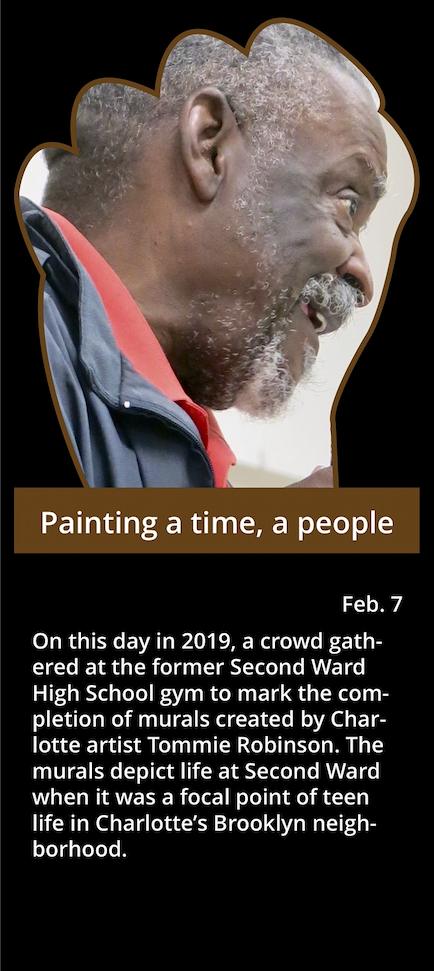
For further reading:
Emiene Wright’s profile marking Robinson’s 50th year as an artist in Charlotte is in the Charlotte Observer here. The Forum published an extensive look at his Environmental Series, prepared in connection with a 2015 Africana Artist-in-Residence program at UNCC. Photos of his murals at the Spectrum Arena are here. A 2009 personal profile, focused on his ties to Mt. Gilead, is here.
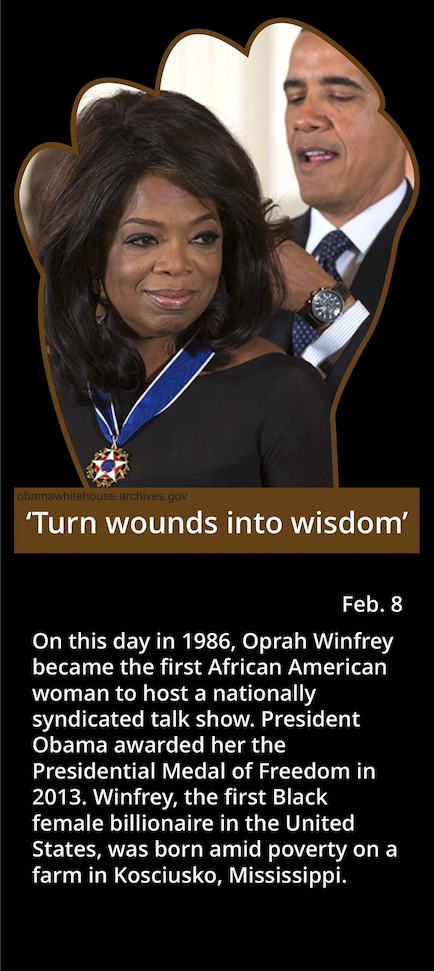
For further reading:
Where to begin with this host, author, actor, benefactor, survivor? She has many millions of followers on Facebook and other social media. Her primary website catalogs her extensive entertainment ventures. A place to find additional links is on her Wikipedia page.
![]()
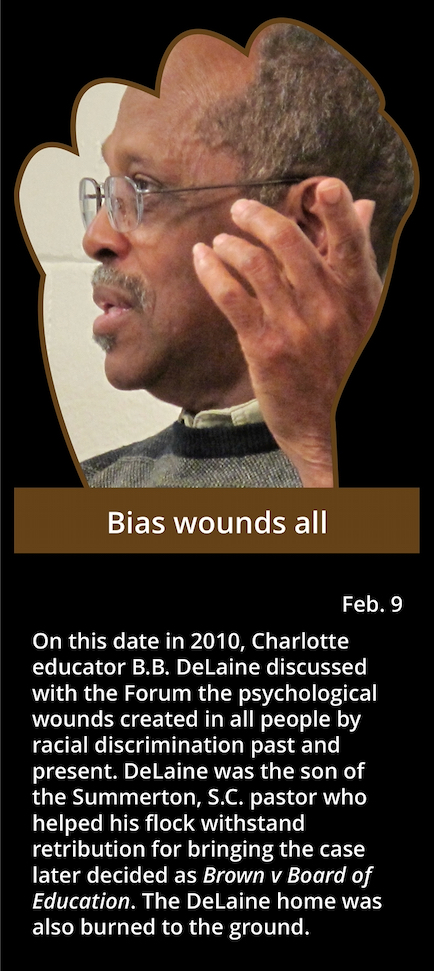
For further reading:
A report on DeLaine’s Forum discussion is here. A David Permutt remembrance is here. Oral history transcripts are here.

For further reading:
One of the key figures in the U.S. House was Bill McCulloch, a conservative white Ohio Republican, who had written his own civil rights legislation, only to be ignored by Democrats. His deal with John F. Kennedy focused on creating a bill that enough Republicans in the Senate could support that Kennedy could defeat the southern Democrats’ expected filibuster.
![]()
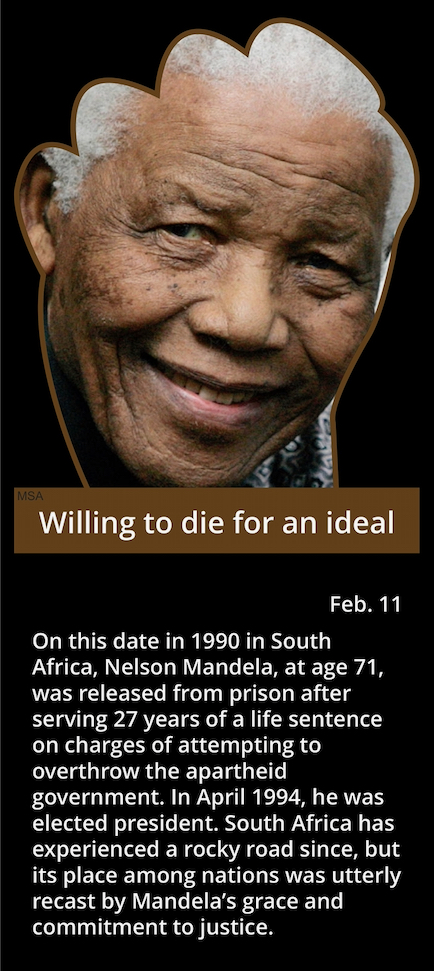
For further reading:
We finally stumped Siri by asking, “How many books have been written about Nelson Mandela?” At least 10 of them were written by Mandela himself. A good place to start looking for information on Mandela’s life from 1918 to 2013 is on his Wikipedia page.
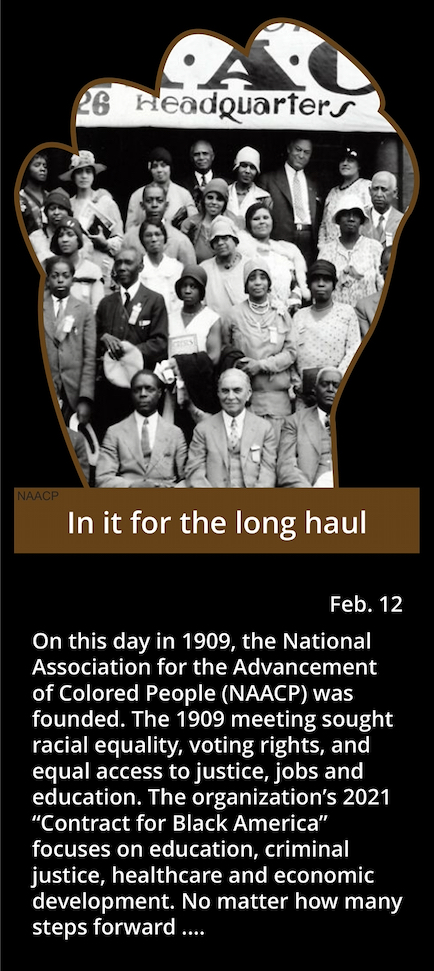
For further reading:
The organization’s national website is here. The Charlotte chapter’s website lists its local office as being at Park Expo and Convention Center, 800 Briar Creek Rd. Its website is here.
![]()
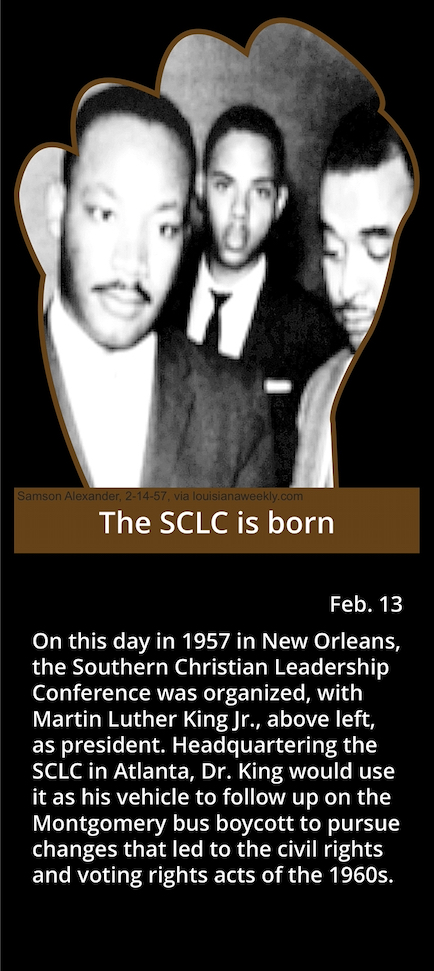
For further reading:
Birthed as a way to encourage direct action on desegregation following the successful Montgomery bus boycott, the SCLC was the prime sponsor of the 1963 March on Washington. Until his assassination in 1968, the Atlanta-based group served as Martin Luther King Jr.’s main organizing tool. More is at Wikipedia. The organization’s website is here.
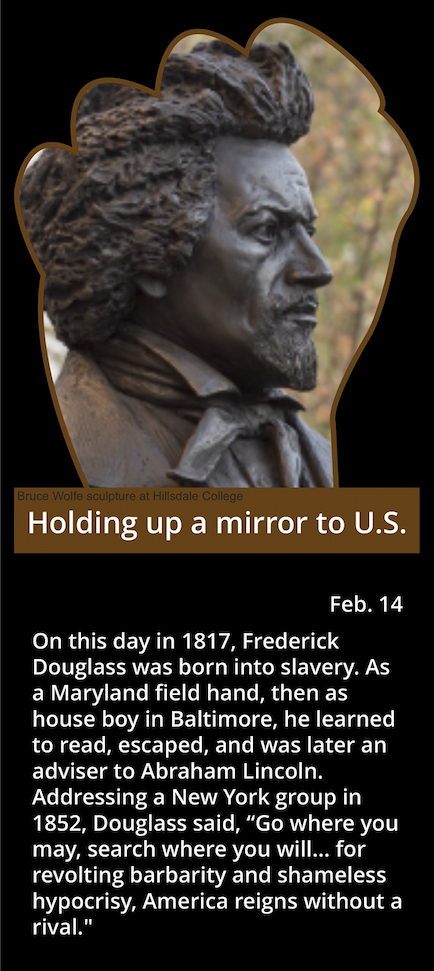
For further reading:
Much more material on Frederick Douglass is on Wikipedia, at PBS and the National Park Service.
![]()
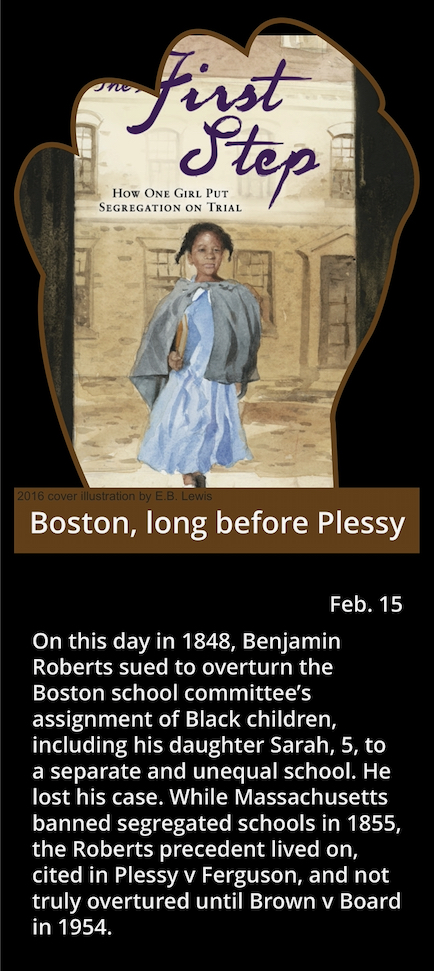
For further reading:
Susan E. Goodman’s The First Step, is available at Amazon and is aimed at children 6-9. Among the online discussions of this lawsuit and its aftermath: one, two, three, four and five.
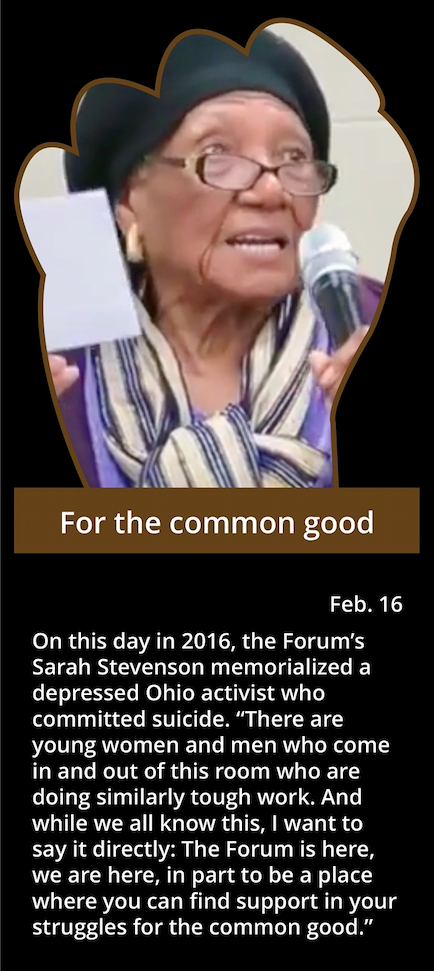
For further reading:
More about Stevenson’s life of service is on website here. Her role in spinning the Forum off from the Black Political Caucus is here. The Stevenson archive bulges with awards and commendations over five decades. Reports on her health in 2021 are here.
![]()
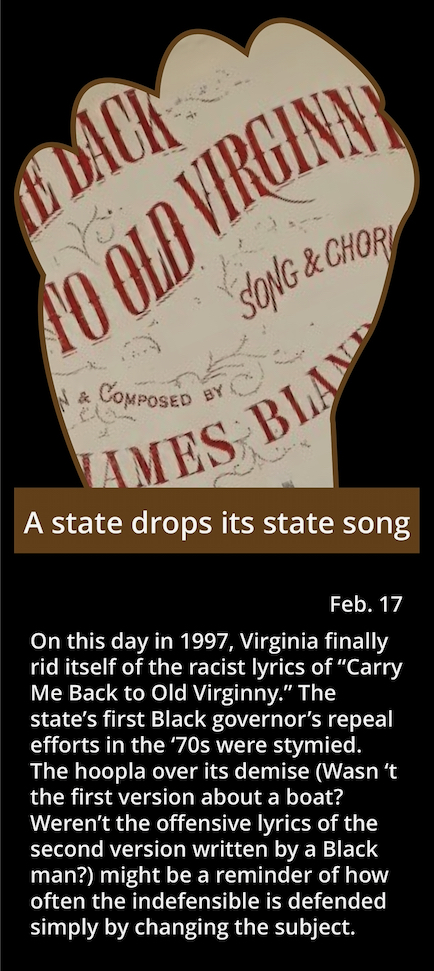

For further reading:
An appreciation of Toni Morrison’s life and work, published after her 2019 death, is here. Morrison’s work with Black writers is recounted here in the New Yorker.
![]()

For further reading:
Early pictures and a story on John McDonald in Charlotte are here and here. The current restaurant in the I-85 building, Laurene’s, was profiled here. Info on the Brooklyn, N.Y., building where McDonald created his first restaurant is here and here and here. His Oct. 30, 1995 obituary is here.
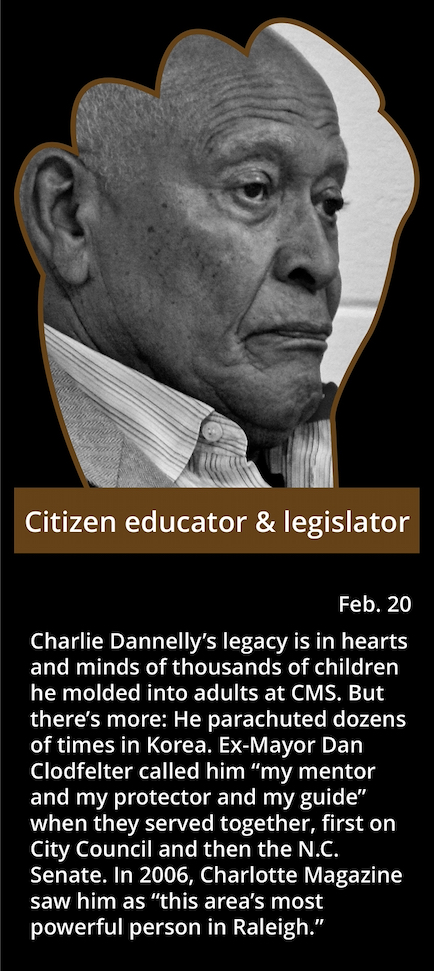
For further reading:
Charlie Dannelly led Quail Hollow Middle School through the dawn of CMS desegregation. A 2012 Steve Crump appreciation is here. Some of his political service is chronicled here.
![]()

For further reading:
A biography is at the Bar Association. An index of Chinn-Gary’s appearances at the Forum is here.

For further reading:
President Barack Obama presented Sifford the Medal of Freedom in 2014. The Observer’s 2015 Sifford obituary is here. In an appreciation, Observer columnist Scott Fowler wrote, “He was one of those people who made our city a better place – a native Charlottean who really just wanted to play golf.“ More is at Wikipedia.
![]()

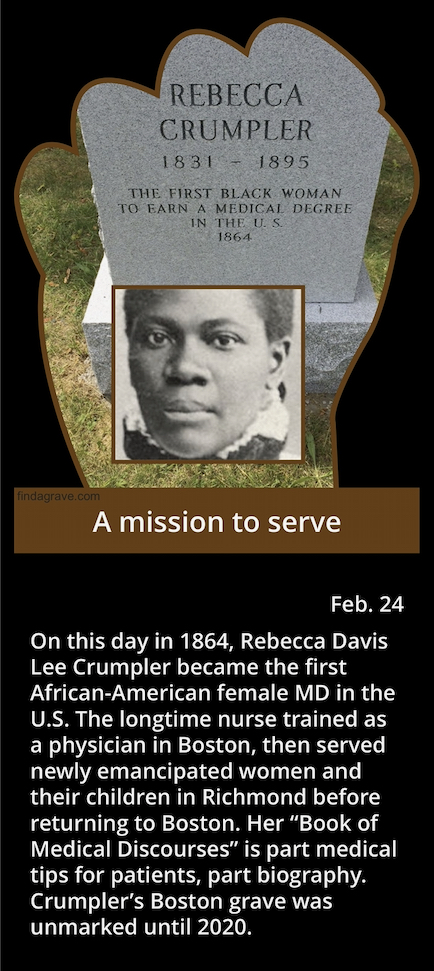
For further reading:
In 2020, four Massachusetts medical schools helped pay for stones for the previously unmarked graves of Dr. Crumpler and her second husband Arthur, an escaped slave from Virginia. More information is at Wikipedia.
![]()

For further reading:
Arthur Griffin has been honored by the Charlotte Post, interviewed by Pam Grundy in 1999 for an oral history project, and cited numerous times in Stephen Smith’s “Boom for Whom: Education, Desegregation, and Development in Charlotte.” Griffin’s website is here.

For further reading:
Dr. Newsome’s optometry practice website is here. A 1989 Charlotte Observer profile is here.
![]()
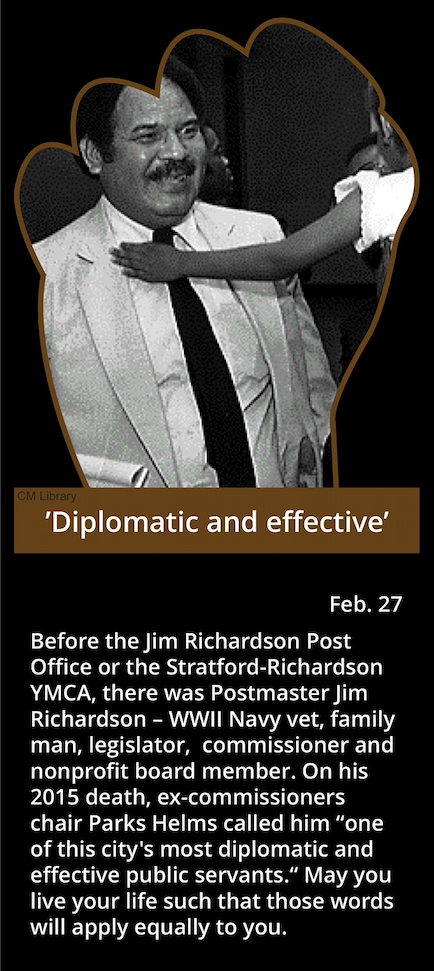
For further reading:
Biographical data is available from Mel Watt’s 2003 House bill to name the Beatties Ford Road post office for Richardson; and a 2008 N.C. Senate resolution honoring its former member.
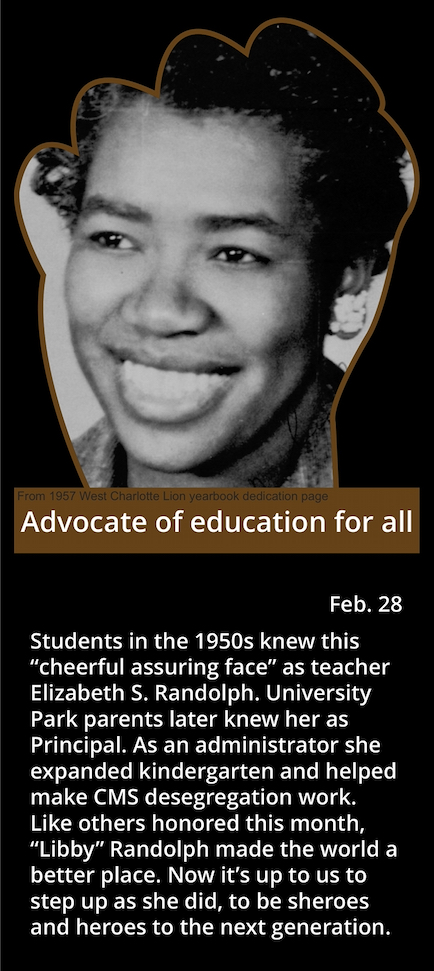
For further reading:
CMS posted background on Elizabeth Randolph when new administration buildings were named for her and Chris Folk in 2017. Reporter Ann Helms wrote about that decision here. The bulletin from Randolph’s 2004 memorial service is here.
A Tom Hanchett profile focused on the Randolphs’ Patton Avenue home is here.
![]()